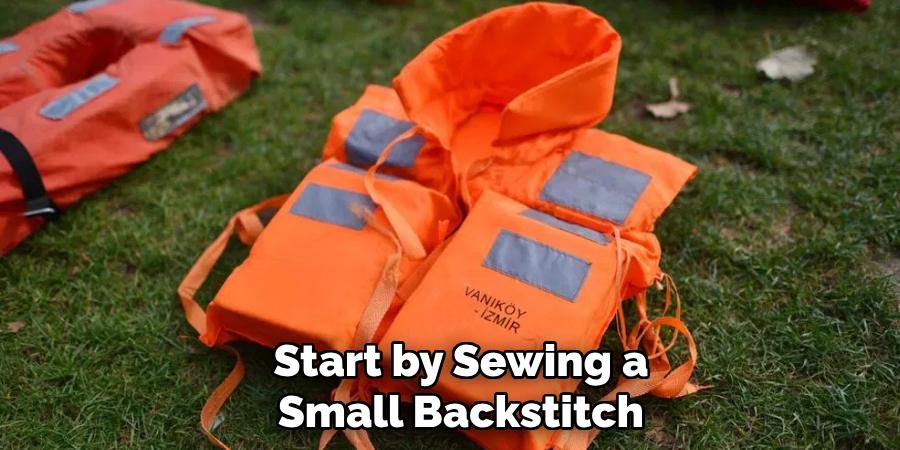Are you tired of wearing a safety jacket that doesn’t fit right? Does it feel too tight or too loose, making it uncomfortable to work in? Don’t worry—we’ve got you covered!
Wearing a safety jacket that fits properly is essential for comfort and functionality. An ill-fitting coat can restrict movement, cause discomfort during long hours of wear, or fail to provide adequate protection. Resizing a safety jacket ensures that it sits correctly on your body, allowing for optimal performance and ease of use.

Whether you need to adjust the straps, modify the seams, or make other alterations, this guide will walk you through the steps on how to resize a safety jacket for better comfort.
What Are the Benefits of Resizing a Safety Jacket?
Resizing a safety jacket can bring about various benefits in terms of comfort and functionality. Here are some reasons why you should consider resizing your safety jacket:
- Improved Comfort: One of the main benefits of resizing a safety jacket is improved comfort. A properly fitting coat will not be too tight or loose, preventing discomfort during use.
- Enhanced Mobility: With the right fit, your safety jacket won’t restrict your movement, allowing you to perform tasks easily and efficiently.
- Increased Safety: A well-fitted safety jacket provides better protection against potential hazards in the workplace. It ensures that all areas of your body are covered and eliminates any potential for loose or hanging fabric to get caught in machinery.
- Improved Work Performance: Comfort and mobility improve work performance, as workers can focus on their tasks without any distractions or discomfort caused by an ill-fitting safety jacket.
- Cost Savings: Properly fitting safety jackets reduce the risk of accidents, saving companies from costly lawsuits and worker compensation claims. It also increases the jacket’s longevity, reducing the need for frequent replacements.
What Will You Need?
To ensure a proper fit, you should have the following measurements taken before purchasing a safety jacket:
- Chest circumference
- Waist circumference
- Torso length
- Sleeve length
It is important to note that sizes may vary between brands and styles, so it is always best to refer to the manufacturer’s sizing chart for the specific jacket you are interested in.
10 Easy Steps on How to Resize a Safety Jacket for Better Comfort
Step 1. Assess the Fit:
Begin by wearing the safety jacket over the clothing or layers you typically wear during its use. Pay close attention to key areas such as the chest, shoulders, and sleeves to determine if the jacket is too tight, loose, or just right. Try moving your arms and torso as you would during regular activities to check for any restrictions in movement or areas of discomfort.

A well-fitting jacket should allow you to move freely while sitting snugly enough to ensure safety and proper functionality. Make note of the specific areas where adjustments may be necessary, such as excessive fabric in the sleeves or tightness around the waist.
Step 2. Gather Required Tools:
To successfully adjust or mend your jacket, gather all necessary tools beforehand to streamline the process. Standard tools you might need include a measuring tape, scissors, sewing needles, thread that matches the jacket’s color, pins, and a fabric marker or chalk to make precise markings.
If alterations require more advanced adjustments, consider having a sewing machine or specialized tools like seam rippers and fabric glue on hand. Ensure you work in a well-lit space with a flat surface to make the job easier and more accurate. Proper preparation with the right tools will save time and help achieve optimal results.
Step 3. Remove Existing Seams:
Carefully examine the seams that need removal to determine where cuts should be made. Use a seam ripper to gently cut the threads along the stitching line, taking care not to damage the fabric. Work slowly and methodically, removing small sections at a time to keep the fabric intact.

If threads remain embedded in the material, use tweezers to pull them out. Once the seams are entirely removed, smooth out the fabric and inspect it for any loose threads or damage before proceeding to the next step. Properly removing the existing seams sets a stable foundation for the alterations.
Step 4. Measure and Adjust:
Use a measuring tape to precisely measure the fabric based on the desired final dimensions. Start by measuring key areas such as the length, width, and any structural points crucial to the adjustment. Mark these measurements clearly on the fabric using tailor’s chalk or a fabric-safe marker.
Double-check your measurements to ensure accuracy before making any cuts or alterations. Adjust the fabric by pinning or basting temporary seams to test the fit and positioning. This step helps to visualize the final result and allows for corrections before securing the changes permanently. Proper measurement and adjustment are essential for achieving a polished and professional finish.
Step 5. Pin the Fabric:
Lay the fabric on a flat, stable surface to prevent slipping or distortion. Use straight pins to secure the pieces of fabric together along the seams where stitching will occur. Place the pins perpendicular to the edge of the fabric, ensuring they are evenly spaced and leave enough room for the sewing machine or hand-stitching needle to pass easily. Be cautious to avoid puckering the fabric and adjust the pins as needed for smooth and precise alignment. Proper pinning ensures the fabric holds its shape and position while you sew.
Step 6. Sew the Adjustments:
Use a sewing machine or a hand-stitching needle to carefully sew along the seams you pinned in the previous step. Start by sewing a small backstitch at the beginning of the seam to secure the thread, then proceed with a straight stitch along the marked line. Maintain a steady speed and consistent tension to ensure clean, even stitches.

If using a sewing machine, keep the fabric gently guided through the machine without pulling or pushing to avoid distorting the seams. For hand-stitching, make small, even stitches for durability. Once you reach the end of the seam, finish with another backstitch to lock the thread in place. After sewing, remove all pins and inspect the seams for accuracy and cleanliness before moving on to the next step.
Step 7. Add Extra Material if Needed:
If the project requires additional material for reinforcement or design purposes, carefully measure and cut the extra fabric to the desired dimensions. Position the material accurately on the main piece, ensuring alignment and symmetry as needed.
Pin or baste the extra fabric in place to prevent shifting during sewing. Sew the material securely, following the appropriate stitching techniques for durability and a neat finish. Ensure the edges are properly finished in order to avoid fraying, and trim any excess threads or fabric for a polished look before proceeding to the next steps.
Step 8. Hem and Finish Edges:
Begin by folding the raw edges of the fabric inward to create a neat and even hem. Use a measuring tape or sewing gauge to ensure consistent fold widths throughout. Press the folds with an iron to set them in place, making sewing easier and more precise. Depending on the fabric type and the desired look, choose the appropriate hemming technique, such as a double fold hem, blind stitch, or serging.
Stitch the hem carefully, ensuring the stitches are even and secure. For added durability, consider reinforcing areas that may experience frequent wear. Lastly, inspect the edges for loose threads and trim them for a polished and professional finish.
Step 9. Test the Fit Again:
After completing the hemming process, testing the fit again is crucial to ensure the garment meets your expectations. Put on the clothing or place it on a dress form to check for proper length, alignment, and comfort. Pay attention to any areas that may feel tight or uneven and adjust as needed. This step will help guarantee that your finished piece looks flawless and fits perfectly.
Step 10. Check Functionality:
After verifying the fit, take the time to ensure the garment’s functionality aligns with its intended purpose. Test features such as zippers, buttons, or elastics to confirm they operate smoothly and securely. For garments with pockets or closures, inspect their placement and accessibility. Walk, sit, or move naturally while wearing the item to confirm it performs well in real-life scenarios. This thorough check will ensure your finished piece looks great and works effectively for everyday wear.

Following these steps will help you resize your safety jacket for a better, more tailored fit without sacrificing safety or functionality.
Conclusion
How to resize a safety jacket for better comfort requires careful attention to detail and practicality.
By measuring accurately, selecting the proper adjustments, and testing the fit, you can achieve a tailored result that enhances comfort and mobility. Ensuring the jacket maintains its safety features is crucial to preserving its purpose while accommodating your needs. With these steps, you can confidently modify your coat for a better, more personalized fit that doesn’t compromise its protective qualities.
Hopefully, these tips have provided insight into the process of customizing motorcycle jackets.

